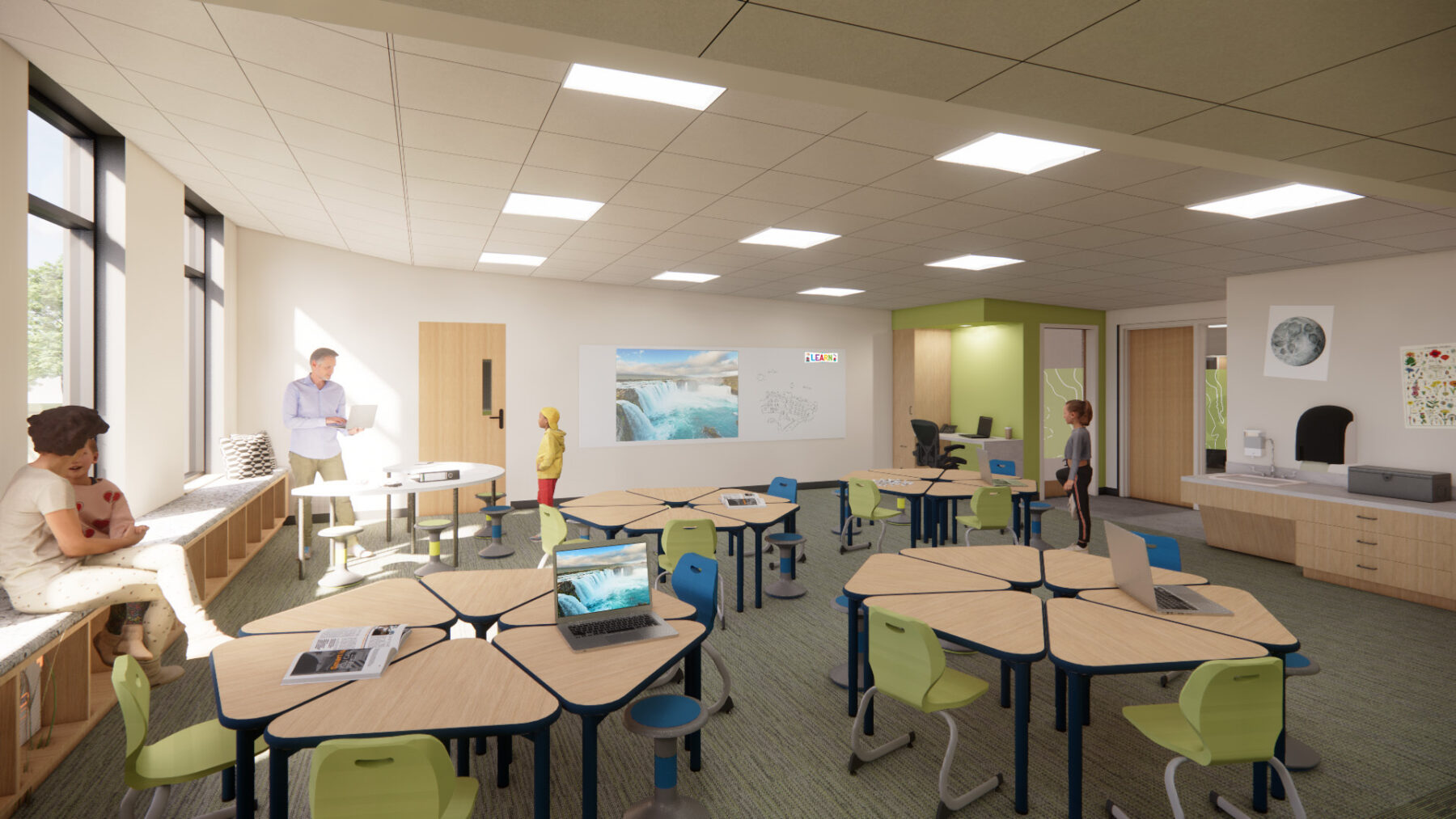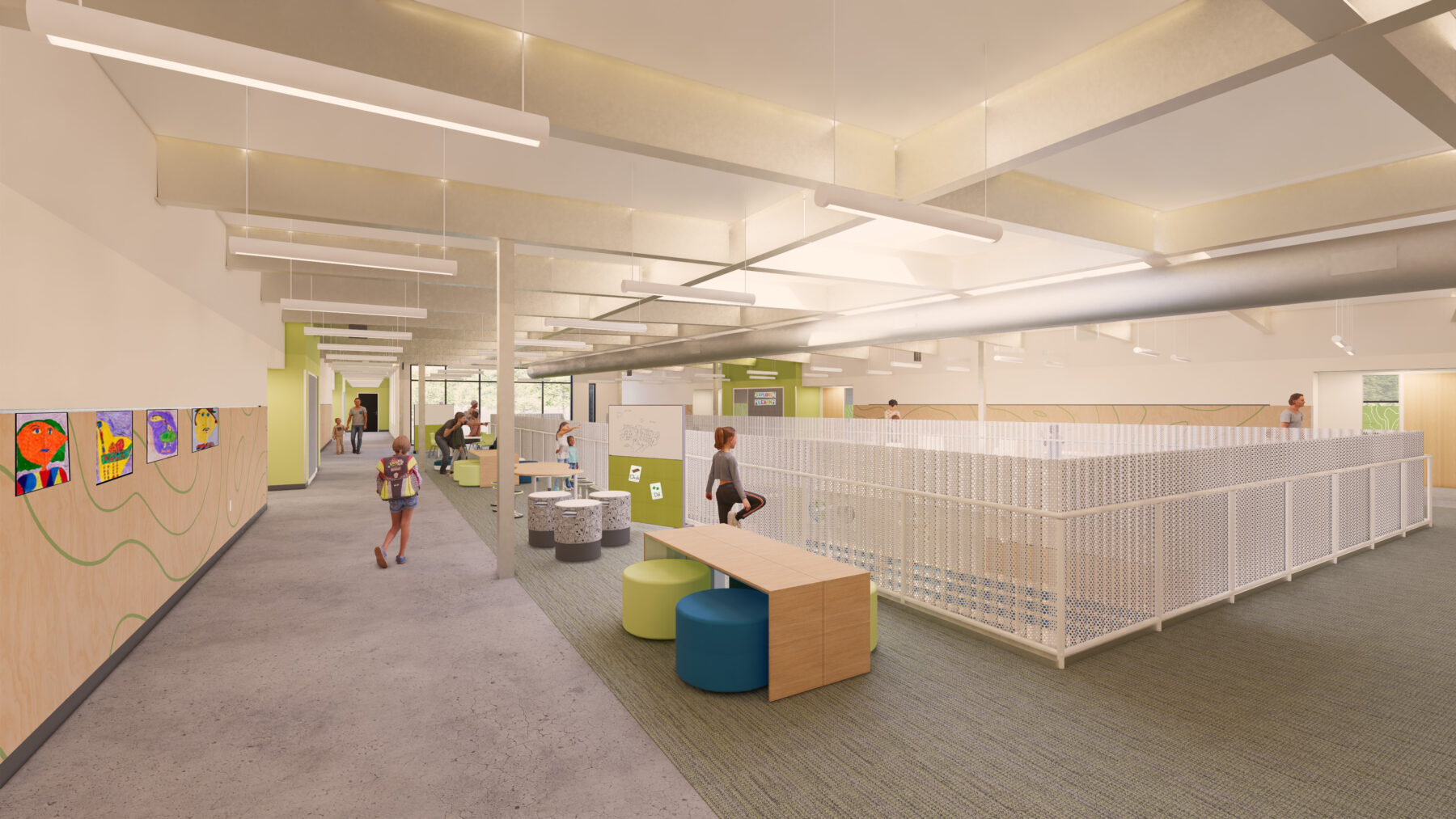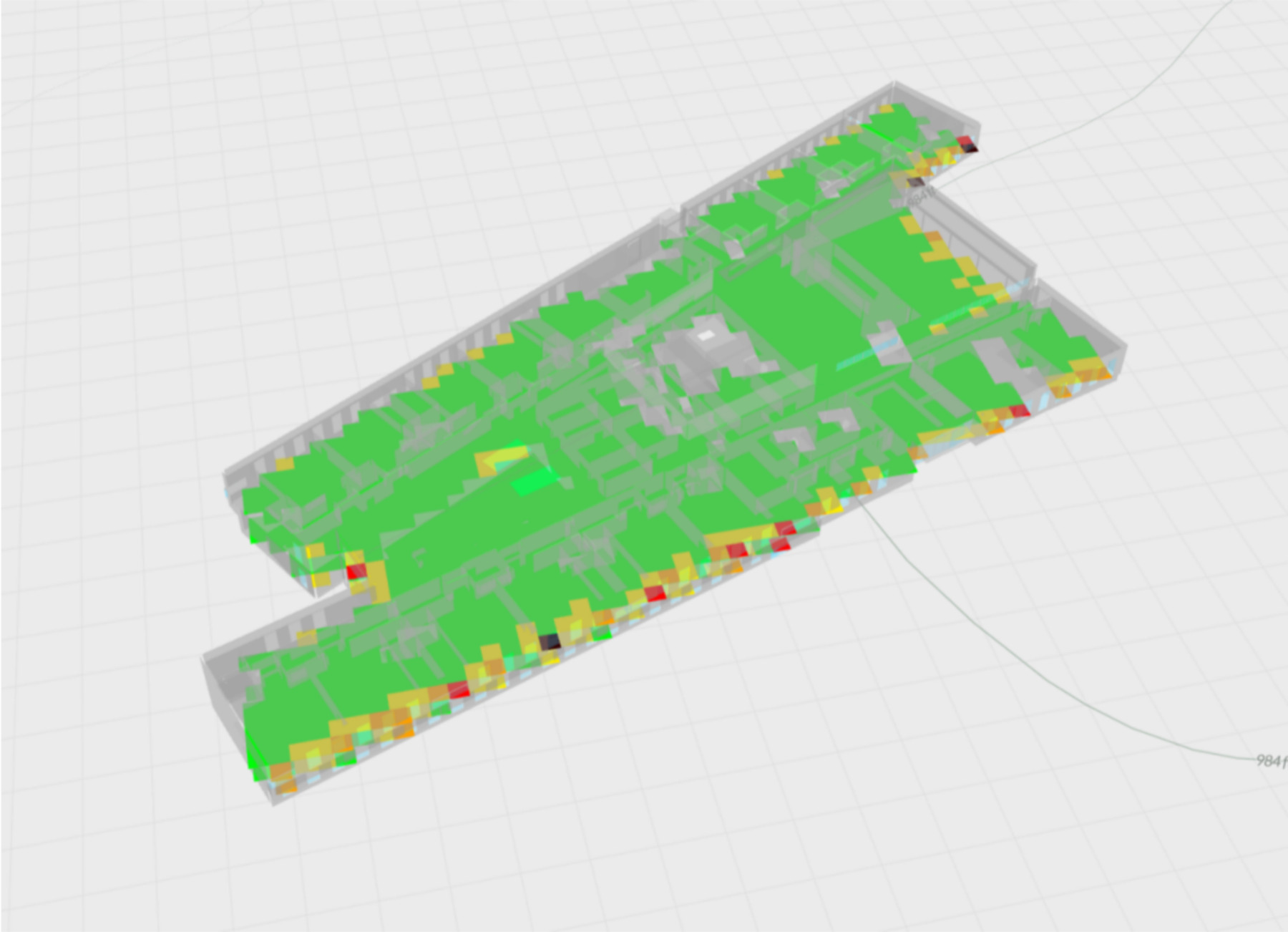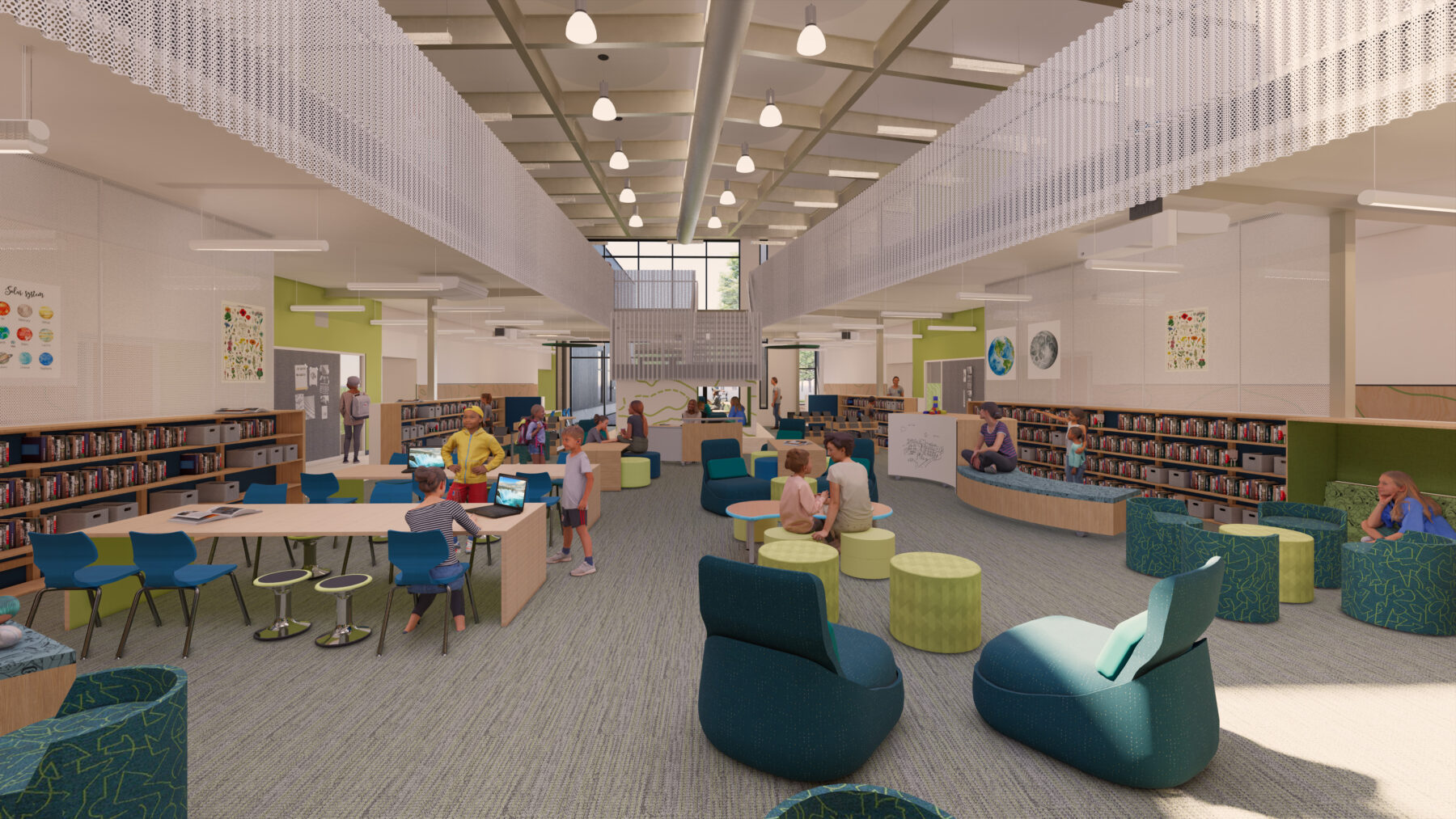
We have all fought the urge to doze off in a dim lecture hall or remain focused in an office bathed in yellow light. So, what if the answer to boosting productivity and focus was not another cup of coffee but daylight? Studies show that adequate natural lighting dramatically increases productivity in the workspace, educational performance in school, and even faster recovery time in healthcare spaces.1
Daylighting is the practice of strategically manipulating natural light to illuminate a space. These studies analyze window placement, skylights, openings, and reflective surfaces to optimize natural light throughout the day. It is a sustainable and energy-efficient practice. By maximizing light and heat from the sun, buildings can reduce reliance on artificial lighting and heating, lowering energy consumption.
INVISION is a firm committed to incorporating daylighting principles into its projects. The nearly completed Waverly Shell Rock Elementary Schools are prime examples of designs shaped significantly by daylighting due to the positive impact on students.

Research suggests a correlation between classrooms with ample natural light and improved academic performance. These studies have shown that pupils in classrooms with the most daylighting experience exam score improvements ranging from 7 – 18%.2 Additionally, classrooms with large windows show 21% more improvement in math and reading test scores than classrooms with the least daylighting throughout the year.2
From the classroom layout to the actual shape of the school, daylighting impacted many aspects of the Waverly Shell Rock project. INVISION balanced upfront costs and predicted light usage to create a design that maximized natural light, energy use, and cost-effectiveness. Daylighting plays a substantial role in Waverly Shell Rock Elementary Schools, with a 70% reduction in predicted energy use.

One notable element of the project is the design of the media center. This area of the school exemplifies how daylighting can transform a space. A strategically placed skylight and glazed exterior wall fill the space with natural light. This light then pours into a cleverly designed opening on the floor leading directly into the lower-level media center to further enhance the daylighting. This strategy disperses the natural illumination and creates a bright, airy atmosphere, reducing the need for artificial light.

Architects are responsible for crafting spaces that minimize a building’s environmental impact and enhance occupant well-being. Daylighting is a powerful tool for achieving both goals. While it isn’t feasible in all cases, conducting daylight studies during early design phases is highly recommended. It reduces reliance on artificial lighting, saving energy while lowering your building’s operational cost. Don’t settle for artificial light – integrate daylighting into your designs and unlock the potential for sustainable, healthy spaces that inspire and energize.